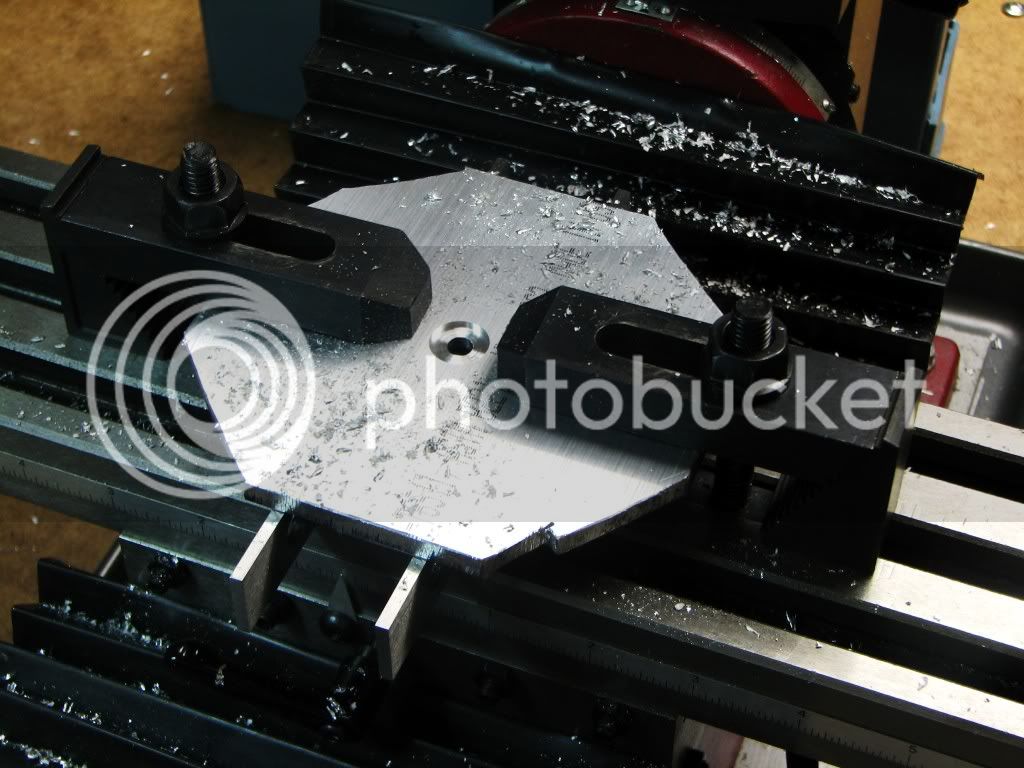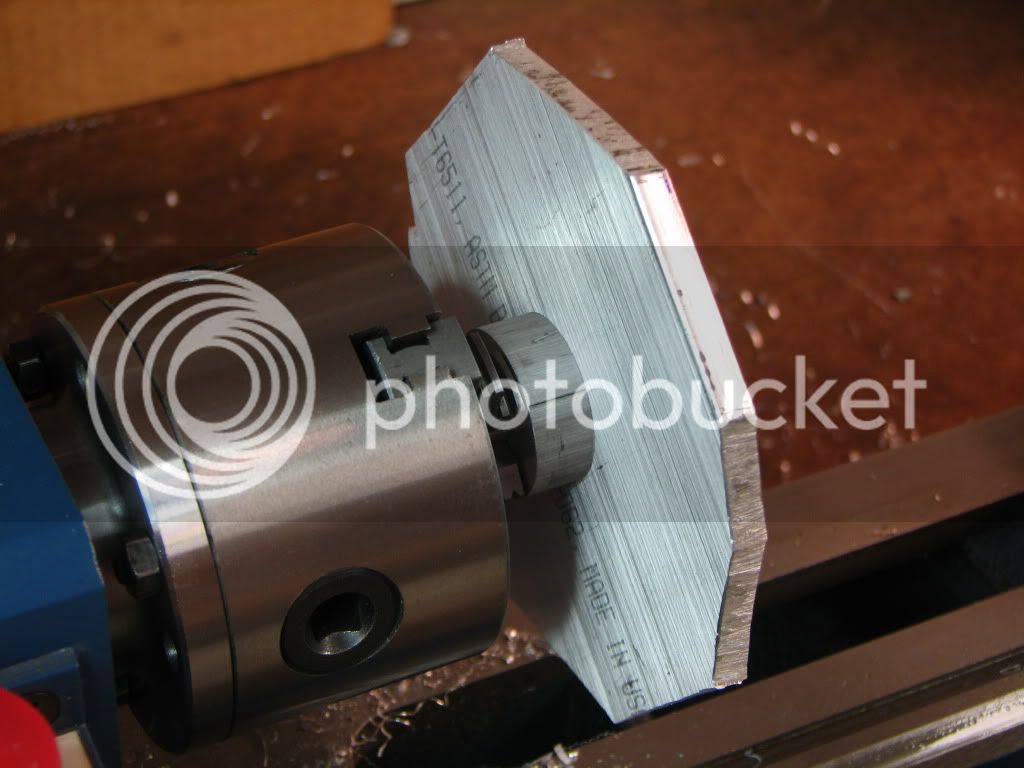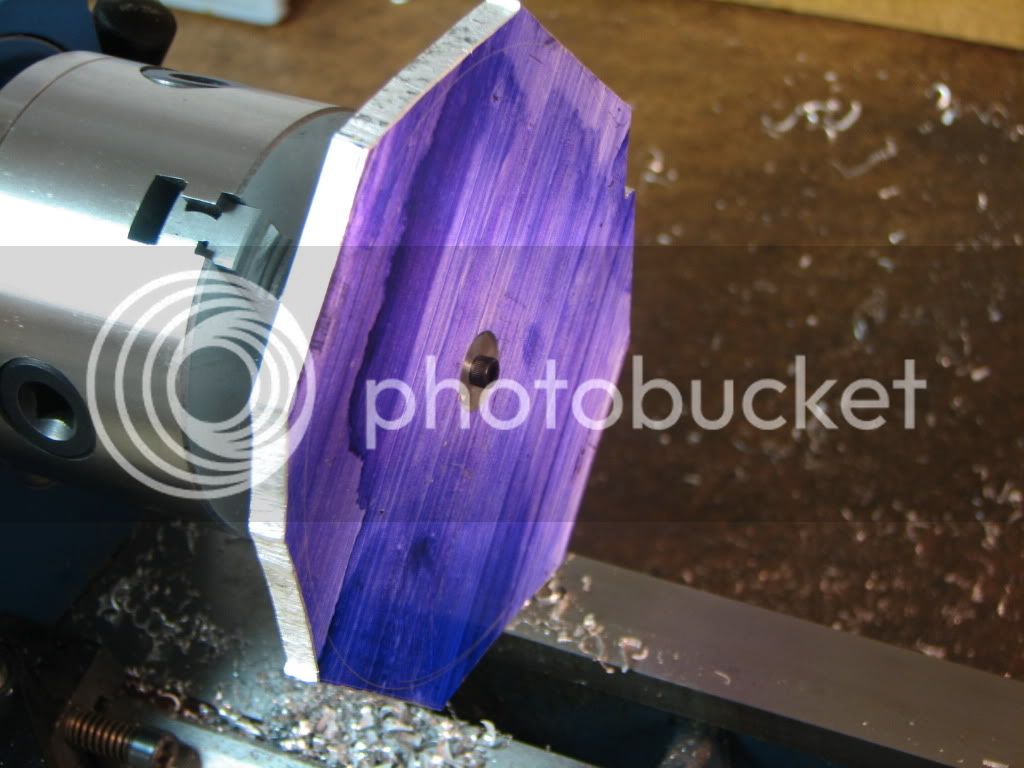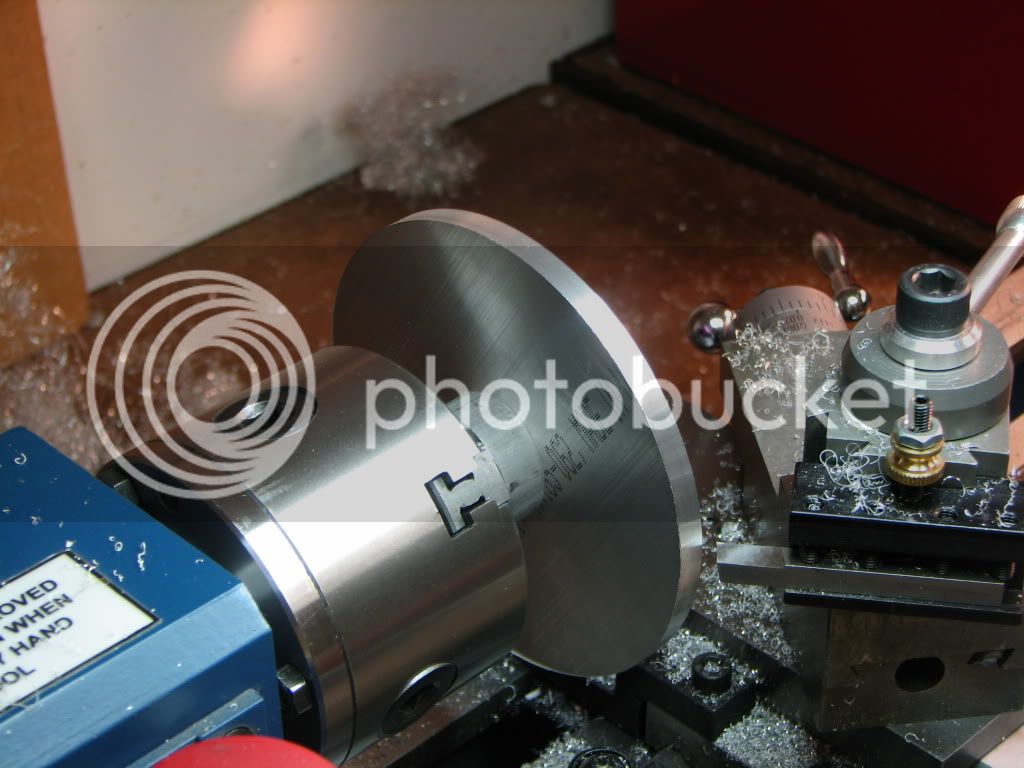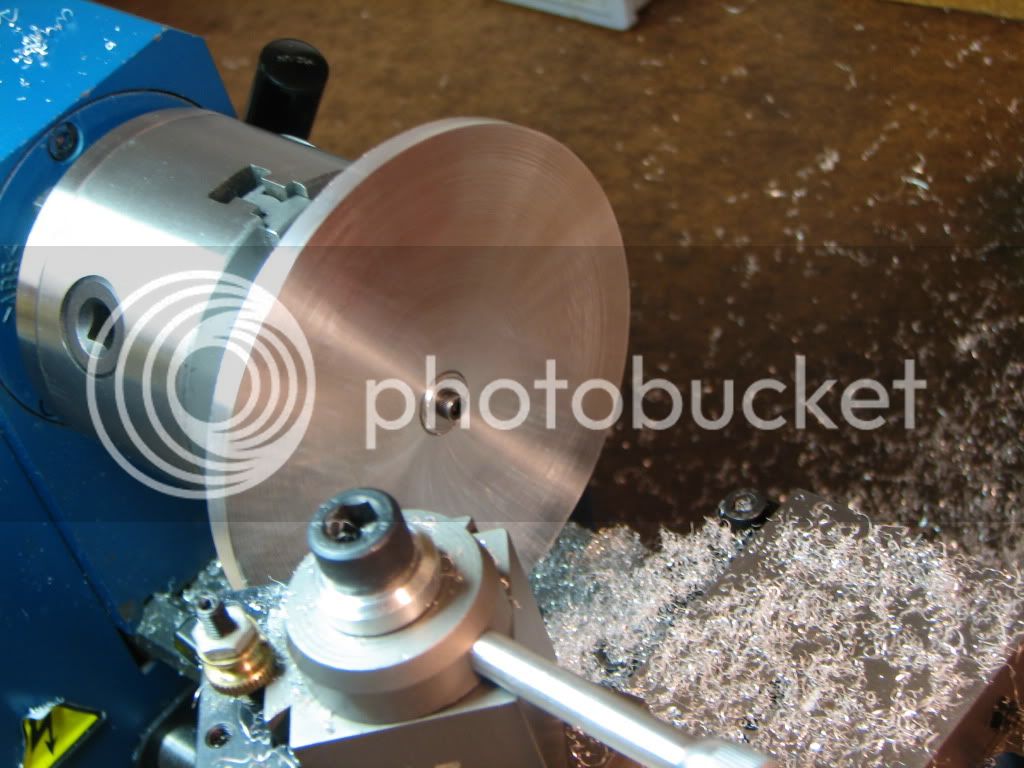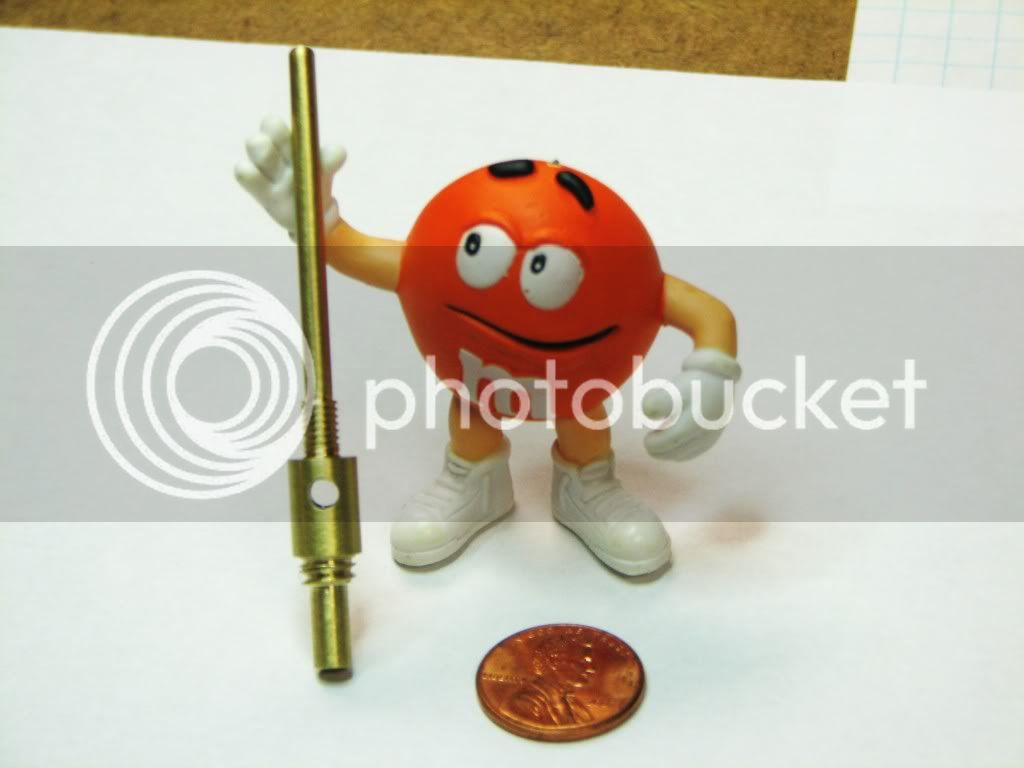Some 'yippee' and some 'fooey'...
But before I get started...some qualifiers...
I am not a machinist and I have very little experience. Anyone reading my thread should understand that I may not be doing things the right way or the best way...but hopefully not an unsafe way.
Anyway...overall things went well. Better than I thought it would actually.
Took a hunk of 1/4 by 5 and chopped off about 4 1/2. Then chopped off the corners. Drilled and reamed the center for 1/4" then milled 1/2" about 1/16 deep. Flipped it and milled another 1/2" round about 1/16 deep.
Then I took a 3/8 and turned about 1/8 of it down to 1/4. Tapped it for 6-32. Took a 1 1/4 round (biggest I had), drilled it to 3/8 and faced both sids.
Took a 1/2 round and made a 1/32 washer.
Then mounted the plate.
The idea was that the 1 1/4 round would help give some support to the wheel while I turned it instead of placing the wheel straight up against the chuck jaws.
This shot shows the 1/14.
This shot shows the 6-32 through the washer into the 3/8 round.
This shot shows the rim turned down. That went pretty well.
One side faced. A little difficult. Rang like a bell and had some bad grooving. Playing with speed and feed made it better. Sanding will take care of it.
Here's where things went awry. Unfortunately the pictures came out pretty fuzzy. This next one shows the grove along the rim. It looks good and the sides are even. But in fact, the plate wasn't true and when you look 180 degrees away, the left rim is quite thin.
Basically, when I flipped the plate around, it was no longer true. I don't know what I could have done to help. The 1 1/4 collar was supposed to help (and maybe it did). Certainly it would have been better to use a bigger collar and give more support to the plate but that wouldn't have helped keep it true.
Still, I'm pretty happy with the results...I had expected much worse or at least more trouble. The next round (if/when) should be better. But this lets me continue.
It's quite possible my chuck isn't running true and the more distance (radially) the more this would be accentuated. I'm 2 1/4" away from center. The error would be on the order of 0.4 degree not counting whatever the collar contributed. So to some extent I'm not surprised.
One question I would have...
As you know I'm going to drill holes around the center. Would you bling the flywheel first? I'm thinking I can shiny it up on the lathe but having holes around the center would make it difficult. I thought I might bling it first then put some sticky paper on it to protect it...then drill the holes.
Oh...as for the possibility of the wheel wobbling on the axle...I'm not too worried about that. The hub (flange) on either side of it should prevent that. I just needed the 1/4 center to seat it on the axle. It doesn't matter if it's thin. What's important is that the wheel is flat. The question for me is whether a built-up wheel would be better.
Thanks for looking.





